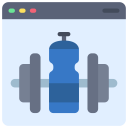Form, Safety, and Confidence
Begin with five minutes of light movement, then add dynamic patterns that mimic the day’s exercises. Warm-ups increase blood flow, prime your joints, and ease nerves so each session starts with focus and calm energy.
Form, Safety, and Confidence
Master movement patterns with controlled tempo and full range. Record a quick video or ask a friend for feedback. When technique feels smooth at lighter difficulty, gradually add resistance while maintaining crisp, confident form.
Form, Safety, and Confidence
Sharp pain is a stop sign; persistent discomfort is a caution flag. Modify range, reduce volume, or swap exercises as needed. Beginners who adapt quickly stay consistent and discover that longevity is the secret strength multiplier.
Form, Safety, and Confidence
Lorem ipsum dolor sit amet, consectetur adipiscing elit. Ut elit tellus, luctus nec ullamcorper mattis, pulvinar dapibus leo.




